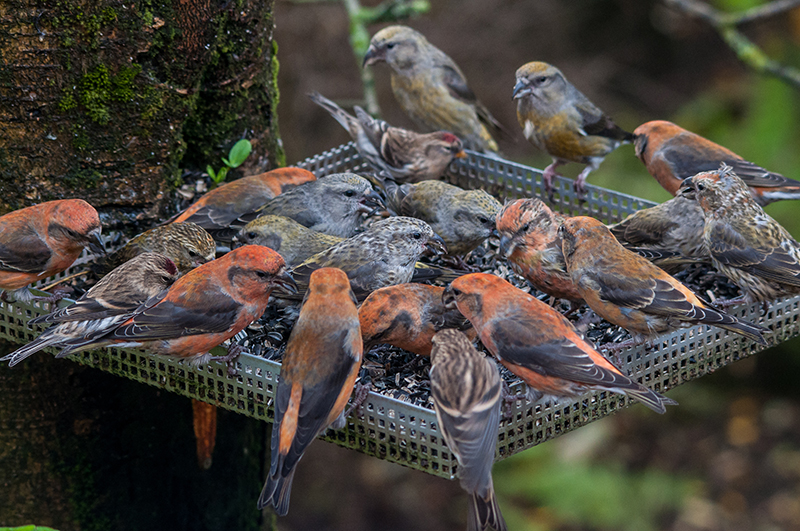A lot can be done to attract birds into the garden. The vegetation of course is the main issue. Bird preservation societies in Europe now place emphasis on the habitat of their proteges. This is on the agenda of RSPB in Britain and the aim is to counter the decrease in common garden birds. More information can be had on RSPB’s web. There you can learn how to attend to the habitat in your garden for the benefit of the birds: Make home for wildlife
Vegetation: Different kinds of vegetation give shelter, good nesting places and food. There are always most birds in the grown gardens, the ones with bigger trees, thick bushes and flowering plants, because there they have the most food. Garden birds often choose spruce trees as nesting places. There they find shelter against the wind, good nesting places and protection against predators.
Water: Water is of course necessary for all life. Birds need water to drink and for bathing which is necessary to keep the feathers clean. Clean plumage gives better protection against the rain and the cold which is especially important in the winter time. Seed eaters need a lot of water because the seeds are so dry. If natural water is not to be had in your nearest surroundings you need to make special arrangements. Water containers, bowls and such, need to be cleaned and refilled regularly so as to maintain the birds’ health. Continuous flow of water is the best choice if it can be arranged.
Feed: The winter time is difficult for many birds, especially when the ground is covered in snow and ice and there are no seeds and insects to be found. In these circumstances they eagerly accept the feed available in gardens and often become very tame. Icelandic birds can not allow themselves to be choosy when it comes to food. Most garden birds accept cereals, bread, fruit and fat. Food leftovers in compost bins are also well received by many birds. As with the water containers, feeders and feeding stations need to be cleaned regularly to prevent disease. Don’t be discouraged although the birds do not take a liking to new feeding stations immediately, they need time to get used to new things.
Cats and birds usually do not go together. Cats are predators in nature with great hunting instincts.
Cats besiege feeding trays, scare birds away, hurt them or even kill. Cats are very agile and easily climb trees and can reach nests hidden even high up in trees. Cat owners (ok, we know you can not own a cat) could limit their time outside e.g. in the twilight when they seem to do most harm. Birds and their young in nests are in danger of falling prey for a cat and also the young when leaving the nest, some even without being able to fly. The middle of winter is also a bad time for birds because cats can more easily hide in the dark. In the darkest time of year the birds are more at risk because food is scarce and it is colder. They need to use the time they have to get food and the cats spy the feeding trays.
Keep the cats inside – that is the tip of the day, every day 🙂
Garden birds | The Bird Garden | What to serve



